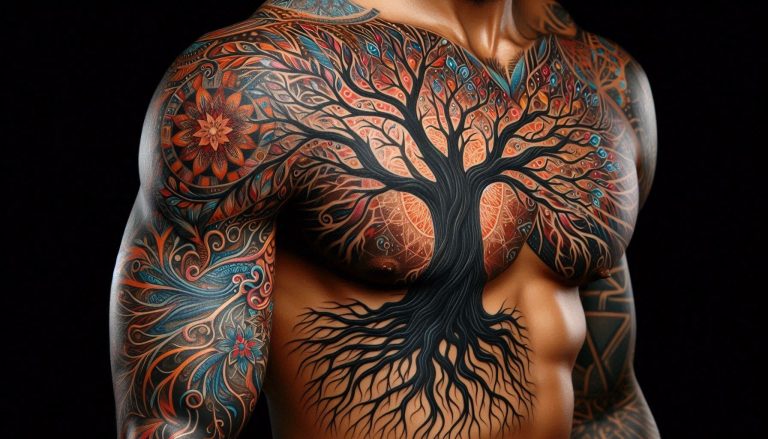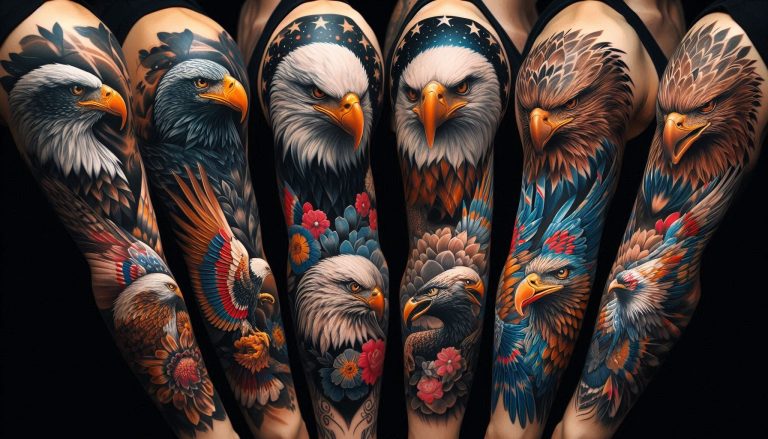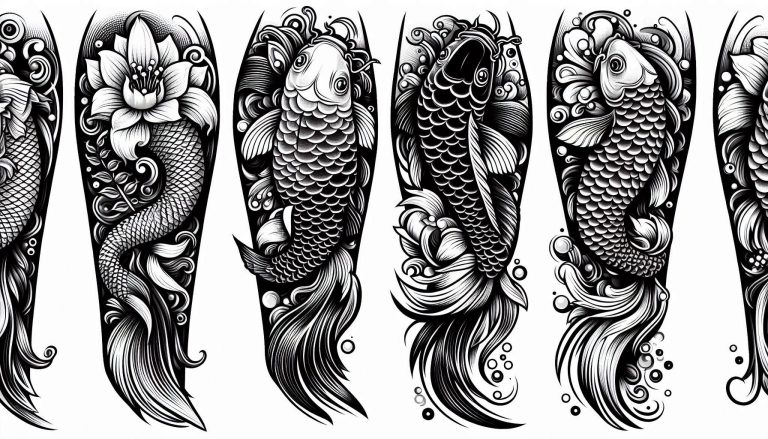Forearm tattoos for men 2025

Men can now express themselves powerfully through forearm tattoos, which combine bold aesthetics, personal meaning, and craftsmanship. The trend is still developing in 2025, with creative designs and methods that satisfy a range of preferences. Because of its prominence and roominess, the forearm is still a popular location for tattoos that honor uniqueness, cultural influences, or significant life events. The history, varieties, and thorough explanations of forearm tattoos for men are examined in this article, which also explains why they are still a popular choice for contemporary body art.
Description Forearm tattoos for men 2025
Designs tattooed on the inner or outer forearm of men can range from simple linework to elaborate full-sleeve extensions. The muscular, flat surface of the forearm makes it possible to create intricate artwork that may be readily hidden or displayed. In 2025, geometric patterns, nature-inspired designs, and hyper-realistic portraiture will all be in vogue. Men typically select designs for these tattoos that reflect their identities or experiences, and they frequently represent strength, resiliency, or personal stories. Modern tattooing technology, such as precise needles and vegan inks, improves longevity and vibrancy. download tiktok mod apk
History
Tattooing has a long history; forearm tattoos were first used to denote status or tribal membership in societies such as the Polynesians. Forearm tattoos, which frequently included anchors or nautical themes, became popular in the West in the early 20th century thanks to sailors. Men were adopting bolder tattoo patterns as tattoos gained popularity by the late 20th century. Forearm tattoos gained popularity as a fashion statement in the 2010s due to the rise of social media and celebrity influence. By 2025, forearm tattoos will combine traditional methods with futuristic designs, fueled by digital creative tools and cross-cultural interactions.
Kinds of Forearm Tattoos for Men
Men’s forearm tattoos combine symbolism with eye-catching aesthetics to provide a flexible platform for self-expression. With their strong black lines and elaborate patterns that highlight masculinity and ancestry, tribal designs are still a popular choice today. Animal motifs, such lions, wolves, or eagles, are common because they represent qualities like bravery, strength, and independence. People who appreciate symmetry and contemporary design are drawn to geometric tattoos, which frequently include mandalas or abstract designs for a calming effect. In addition to script or phrase tattoos on the inner forearm that function as personal mantras, religious imagery such as crosses, praying hands, or Buddhist symbols enables spiritual storytelling. Mountains capes, woods, or ocean waves are examples of nature-inspired designs that appeal to outdoor enthusiasts because they represent resiliency or adventure. Using vivid colors and flowing lines, traditional Japanese art that depicts koi fish, dragons, or cherry blossoms offers cultural depth. Some choose realistic portraits or sleeve tattoos that carry the story from elbow to wrist for a striking effect. Forearm tattoos, whether simple or intricate, combine creativity and significance, making them a popular option for contemporary males.
Traditional Tattoos
/
Deeply ingrained in the history and identity of various communities across the world, traditional tattoos are profound cultural manifestations. These tattoos function as visual narratives of legacy, ranging from the strong Irezumi of Japan, where motifs like koi fish and dragons signify tenacity and wisdom, to the elaborate Ta Moko facial designs of the Māori in New Zealand, which symbolize lineage and social position. While Native American tattoos frequently feature mystical images for protection and a connection to nature, Polynesian traditions use geometric designs to indicate ancestry and accomplishments. Nordic designs recall ancient beliefs by including legendary motifs such as runes or Yggdrasil. These tattoos, which are made with age-old techniques like hand-tapped instruments, natural inks made from plants or charcoal, and ceremonial customs, serve as more than just decorative accents; they are spiritual protections, rites of passage, and storytelling tools. Their ongoing practice, which bridges the past and present through enduring craftsmanship, demonstrates a strong commitment to maintaining ancestral knowledge and cultural continuity despite contemporary innovations.

Design Features
- Bold Lines and Colors: Thick black outlines with a limited color palette (red, green, yellow).
- Classic Motifs: Anchors, daggers, or pin-up girls, often with banners or text.
- Placement: Typically on the outer forearm for maximum visibility.
Appeal
Men who want a rough, vintage style are drawn to traditional tattoos. Because of their prominent lines, they are durable and age well. In 2025, painters use contemporary shading techniques to maintain the vintage feel while adding depth.
Example
A popular design is a ship with waves, which stand for bravery or tenacity and are frequently combined with the name of a loved one.
Realism Tattoos

Realism tattoos, sometimes referred to as realistic or photorealistic tattoos, are a striking style that seeks to meticulously recreate real-life imagery, frequently taking the form of extremely detailed sketches or high-resolution photographs. In order to produce realistic depictions of themes like portraits, animals, landscapes, or still life situations, this genre places a strong emphasis on accuracy in shading, texture, and color. Realist tattoo artists employ sophisticated methods including chiaroscuro (light and shadow contrasts) and delicate gradients to add depth and character, making sure the tattoo reflects the subject’s inherent appearance. With an emphasis on anatomical correctness and bright realism, common themes include moving homages to departed loved ones, lively wildlife, or stunning environmental vistas. Black-and-gray reality frequently draws attention to striking tonal contrasts, but color realism captures the depth of the subject’s hues. Clients must look for skilled painters who can convert intricate artwork into long-lasting, skin-born art because this technique necessitates a high level of technical proficiency. As a result, the distinction between reality and body art is blurred in this visually striking sculpture.
Design Features
- Hyper-Detailed Imagery: Portraits of family members, celebrities, or wildlife.
- Grayscale or Color: Black-and-gray for dramatic effect or full-color for vibrancy.
- Placement: Inner or outer forearm, often wrapping around for a 3D effect.
Appeal
Realistic tattoos, such as a family portrait or a lion symbolizing power, are popular among men who want to memorialize loved ones or display their hobbies. These tattoos make a powerful statement because they are visible on the forearm. Digital stencils are used by artists in 2025 to ensure accuracy.
Example
A grayscale wolf with piercing eyes, symbolizing loyalty, is a trending choice.
Geometric Tattoos
Using forms, lines, and patterns to produce eye-catching designs, geometric tattoos are an enthralling kind of body art. These tattoos, which have their roots in symmetry and accuracy, frequently use geometric shapes like circles, triangles, hexagons, and sacred geometry to represent harmony, balance, and interdependence. Geometric tattoo designs are popular among minimalist and abstract tattoo enthusiasts. They can be used alone or in combination with mandalas, animals, or natural themes to provide deeper significance. Geometric tattoos are classic and contemporary, appealing to people who value both art and order because of their simple lines and mathematical beauty.

Design Features
- Symmetrical Patterns: Mandalas, hexagons, or interlocking triangles.
- Minimalist or Complex: Simple linework or intricate 3D illusions.
- Placement: Often centered on the inner forearm for symmetry.
Appeal
Men who appreciate accuracy and abstract symbolism, such as balance or interconnection, are good candidates for geometric tattoos. Their depth is improved in 2025 by dotwork and negative space techniques. Their understated elegance makes them perfect for professionals.
Example
A mandala with radiating lines, symbolizing harmony, is a popular forearm design.
Tribal Tattoos

Originating from ancient indigenous tribes worldwide, such as Polynesian, Maori, African, and Native American civilizations, tribal tattoos are among the most traditional and culturally rich types of body art. These tattoos have historically been used to denote accomplishments in combat, rites of passage, spiritual beliefs, or social standing. Tribal tattoos, which are characterized by strong black lines, elaborate designs, and symbolic themes, frequently cover sizable body parts like the arms, chest, or back. Tribal tattoos are popular nowadays for their aesthetic appeal, but some people acquire them to respect their ancestry or to gain a deeper understanding of cultural significance.
Design Features
- Curved, Angular Lines: Swirling or jagged patterns inspired by Polynesian or Maori art.
- Solid Black Ink: Minimal color, emphasizing contrast.
- Placement: Often wrapping around the forearm for a dynamic effect.
Appeal
Tribal tattoos resonate with men seeking cultural connection or a bold, masculine look. In 2025, artists customize tribal designs to reflect personal heritage or spiritual beliefs, making them deeply personal.
Example
A Polynesian-inspired band with wave motifs, symbolizing strength, is a classic choice.
Biomechanical Tattoos
A remarkable combination of mechanical components and organic human anatomy, biomechanical tattoos provide the appearance of technology underneath the skin. This style, which incorporates gears, pistons, cables, and robotic components to simulate a smooth fusion of life and machinery, was inspired by the strange, otherworldly designs of H.R. Giger, who is well-known for his work on the Alien franchise. These tattoos, which are frequently depicted in hyper-realistic 3D, use careful shading, perspective, and a monochromatic color scheme of black and gray to simulate metallic textures, giving the impression that the skin is peeled back to reveal complex mechanical systems. Symbolically, they explore concepts of industrialization, cybernetic enhancement, or personal resilience, reflecting themes of human-technology cooperation. Wide-ranging, intricate drawings are possible on popular positions like arms, chests, or backs, but their realistic depth demands that talented artists learn the necessary accuracy. Beyond aesthetics, biomechanical tattoos are poignant reminders of humanity’s changing relationship with machines at a time of rapidly increasing technology.

Design Features
- Flesh and Machine Fusion: Exposed gears, circuits, or robotic parts beneath “torn” skin.
- Grayscale or Metallic Tones: Silvers, blues, or blacks for a sci-fi aesthetic.
- Placement: Outer forearm, often extending to the elbow for drama.
Appeal
These tattoos appeal to men fascinated by technology or sci-fi, symbolizing the fusion of humanity and machine. In 2025, 3D shading and UV-reactive inks add a glowing effect under blacklight.
Example
A design showing wires and pistons under ripped skin, symbolizing resilience, is trending.
Conclusion
In 2025, men’s forearm tattoos are a vibrant fusion of custom, creativity, and narrative. Every tattoo style offers a different method to express one’s identity, from the classic bold lines of traditional tattoos to the futuristic appeal of biomechanical designs. Because of its adaptability and exposure, the forearm is a perfect canvas for both realistic portraiture and subtle geometric patterns. Men can anticipate even more colorful, long-lasting, and imaginative tattooing options as technology develops. In the end, getting a forearm tattoo is about creating a long-lasting artwork that speaks to one’s beliefs, life experiences, and future goals.



